
March, 1980
“I was born on the Westside of Columbus, September 20, 1896, and my dad, Charles I. Hood, was in the grocery business with one of the three largest stores in Columbus. His place was at 171 S. High St., where the City Center Mall is, across from National City Bank and Lazarus Department Store.
Both sides of my family have been in Central Ohio for over one hundred seventy years, my grandfather originally coming from Georgia when he was small. I get a kick out of letting people who think every Black comes from Mississippi, Virginia or Georgia know that my family was here when they came. And I don’t hesitate to tell them.
I never went to college and I only went to high school for three months. There was a panic in 1908 that wiped out lots of businesses and Dad took sick right after that with malaria and typhoid fever. He never recovered, died in 1912 and at fifteen years old I had to come out of school and take care of my mother, which I did for the next forty-two years. I learned the hard way, went to night school and listened, instead of talked. Anything that I have learned has come from listening and trying to develop an attentive mind.
When I was young you could go anyplace you wanted. The social club I belonged to, La Legro, entertained at the Busy Bee at Gay and High Streets. It was one of the finest restaurants in Downtown Columbus and we never had any problems. During the years of the first world war, we had an influx of colored and whites as the city became a center for war work. That’s when Columbus became segregated; prior to that colored lived anywhere.
I remember when I went to work for the Franklin County Courthouse, the first day of May 1918. There wasn’t a man in the office, other than the chief deputy and the auditor, who spoke to me for three months. It made me no difference; I got a raise the second week I was there and if they wanted to give me the silent treatment, OK with me. I did my work.
Finally one fellow, Prosper Bonarx, came in and said, ‘Jack Kaiser is a neighbor of mine and he wanted us to be friends.’ Kaiser was the auditor of the Ohio National Bank and I knew him well. Bonarx became the first man at work who spoke to me.
I was trained as a violinist and my first musical job was with Thomas Howard on Fourth Street at the Masonic Temple. Howard was a pioneer music booker, who played bass fiddle and booked a few groups that were very good units. Charlie Parker was another pioneer booker who enjoyed a very good reputation. He had a first class barbershop at Gay and High, where he also had his booking office.
Parker had four or five units out playing all the time and he had a pretty regular thing at the Kaiserhoff Hotel on the corner of Gay and Wall Alley, northwest of High Street. He played violin and sang with his group that included Sanford Smith on piano, Brownie Clark on drums and Ollie Scott on saxophone.
His groups were three or four piece combinations and one great group was led for three or four years at the Hotel Hollenden in Cleveland by pianist Sammy Stewart played piano in another group and as many as thirty five of his groups played in hotels and amusement parks around the Midwest. Parker’s Popular Players were known everywhere.
Stapleton Wright brought the first saxophone into the United States from the Spanish American War and Wright’s Saxophone Orchestra was a pretty successful unit. They stayed on the road in Michigan, West Virginia and Pennsylvania, where they were popular at Penn State University.
The college would have bands from all over the country twice a year and Fred Waring was the campus bandleader. He worshiped Stape Wright and Wright taught him the theme song that became Waring’s signature with the internationally famed Pennsylvanians, Sleep.
Another musician that worked with Parker was Carl Kinney, whose stage name was “Battleaxe” and he played at the Wintergarden in the Southern Hotel. He was the first drummer to start throwing sticks and when Vernon and Irene Castle came here to perform they saw Battleaxe and took him right to New York City.
Battleaxe won a competition at Madison Square Garden in the early 1920’s that made him “World Champion Drummer.” He played with the top musicians in New York and came back to Columbus where he died in 1969.
Another violinist that I came up with is worth remembering, Floyd Hickman. He had a violin orchestra and played at the Pier Ballroom in Detroit. Another Parker musician was Jimmie Perkins, who became personal drummer for Ethel Waters.
Sam Stewart was the pianist led the best Parker band . The five pieces included the Robbins Brothers, Rennan and Millard, on various instruments, Paul Jordan on violin, Lawrence Dixon on cello and banjo.They were classically trained and during the years that they spent at the Hotel Hollenden they trained with top teachers in Cleveland.
They came back to Columbus when the Deshler-Wallick Hotel opened in 1918 and performed evening concerts. The lobby was crowded every evening and they performed nothing but classics during the dinner hours. But after 9 p.m. they added more musicians and played for dancing; they were such fine musicians.
Sam wanted to break away from Parker; so in 1918 he and I collaborated to form Sammy Stewart’s Singing Syncopators. We played at the Southern Hotel and the Secore in Toledo. When bands contracted for jobs in those days it wasn’t for a week or two, it was for a year.
But that was when I was working for Franklin County, so when the band left town, I could only join them on vacations. The band spent the year 1922 in Detroit at the Ritz Supper Club and left Detroit for Chicago. I joined them at the Sunset Cafe on the Southside playing bass in that terrific band.
They were a symphonic jazz band, mixing concert and show material. There was a superb hot trumpeter named Eugene Hutt who soloed with that group. Louis Armstrong came to sit in, but he couldn’t cut the music. He was a speller and you couldn’t spell there because they’d put on a classic number like Rhapsody In Blue or The William Tell Overture.
The band eventually came back to Columbus and opened the Ogden (Lincoln) Theater, Thanksgiving, 1928. They went on to New York City in 1930 and made stars out of Chu Berry and Big Sid Catlett.
I used to lead a band at Indianola Park, on the Northside, right at the end of the interurban line. Percy and Eugene Lowery were in that band and Percy later led his own bands, before become a lawyer and the first Black member of Ohio’s Parole Board. There was also a great trombonist in that group, Archie Hall, who had played during WWI with the great James Reese Europe’s Harlem Hellfighters.
I worked at Valley Dale Ballroom before the Peppe Family owned it and brought a Springfield group called McKinney’s Cottonpickers to Columbus for the first time. Jimmy Peppe bought Valley Dale and he had an orchestra who would alternate with mine at a dance hall in Marion called the Millerdome.
Jimmy Peppe gave me a chance there and I made good on it. He became a successful booker, moved his office to New York and took the Sammy Kaye Band out of Ohio University. He made a top band out of them and turned the Dale over to his brother Lou Peppe. (Note: one of the three Peppe Brothers was legendary OSU swim coach Mike Peppe)
I don’t want to boast, but because of some of the top notch players that I had in my band, the Pittsburgh Courier ranked us among the top ten Negro orchestras for years. Saxophonist Joe Thomas left my group to become a star with the Jimmie Lunceford Orchestra and a Zanesville man named Sy Oliver used to write arrangements for me. He sat in my trumpet section on occasion before he went on to Tommy Dorsey, before leading his orchestra in New York’s Rainbow Room. My front man and director, Chet Nelson, placed second in a national competition for bandleaders in New York.
Have you every heard of Harry “Sweets” Edison? Well, Harry will tell you that I insisted that he learn to read music. I took Harry and his trumpet out of Columbus East High School and he left me to go with Count Basie. He also became Frank Sinatra’s right hand man.
I got to share the stage with some of the best during my years at Valley Dale. Kaye Kyser played there a summer before he went on to New York. Benny Goodman performed there with his great quartet, Artie Shaw brought Billie Holiday to Columbus.
The night Sinatra played there was something else; the girls just screamed and fainted something awful. But the biggest crowd, surprisingly, belonged to Guy Lombardo, the place was packed inside and out.
World War Two was hard on the music business, the draft plucked many of my best men and I ended up consolidating my band with Clarence Olden’s Dixie Rhythm Boys . Gas was being rationed and a trip to Valleydale became almost an unaffordable luxury.
But we held it together and made it a point to entertain the people to make sure that they’d return again. All my men worked day jobs and played at the Dale on Friday and Saturday nights.
We kept this up for years, I still had my job doing real estate identification for the county and I had a large insurance business going. It made for a rather full week with me laying out work on Friday and Saturday to keep three women at my insurance office going.
When New Year’s Eve, 1951, came I had had it with the music business. Asthma was putting me on the ropes and I still had six months on my Valley Dale contract so I turned the band over to Clarence Olden.
I’ve worked so many jobs for all these years that I could never fully retire. I gave my insurance business to my son, Charles and now the county and my household are my only responsibilities.”
(Note: Mr. Hood retired from 54 years service to Franklin County in 1986, died January 25, 1991, at aged 94, but he’s very much alive in me).



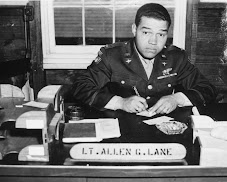
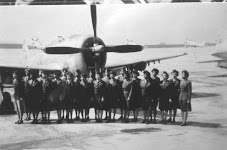
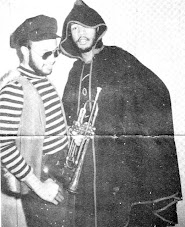





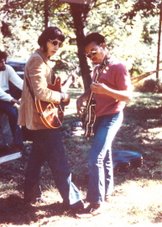
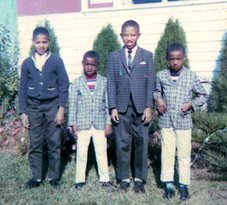
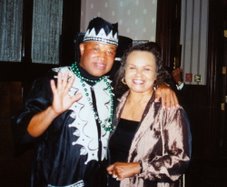

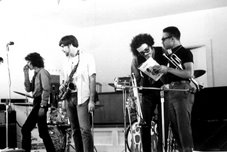
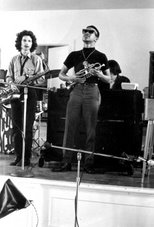

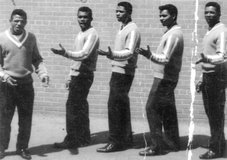



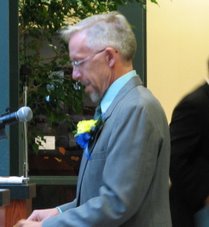
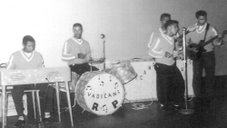
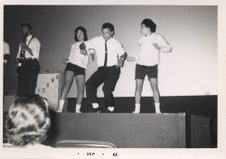


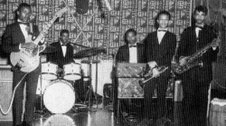
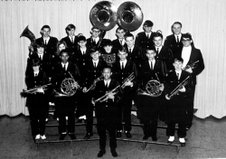
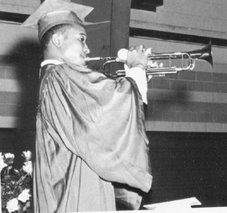
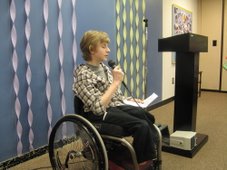
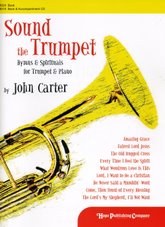
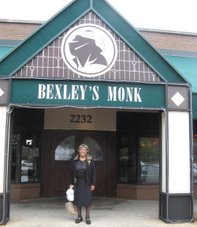
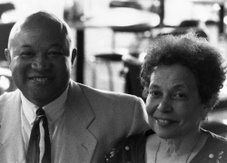
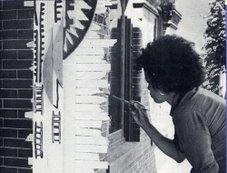

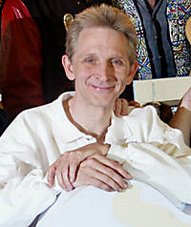
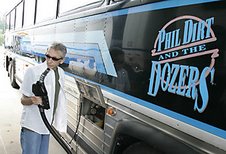
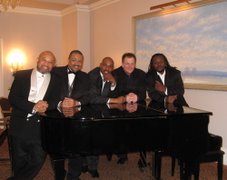
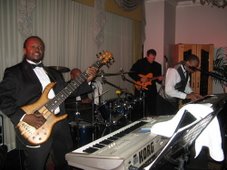
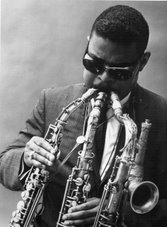
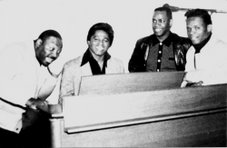

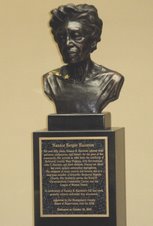
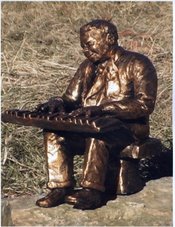
No comments:
Post a Comment